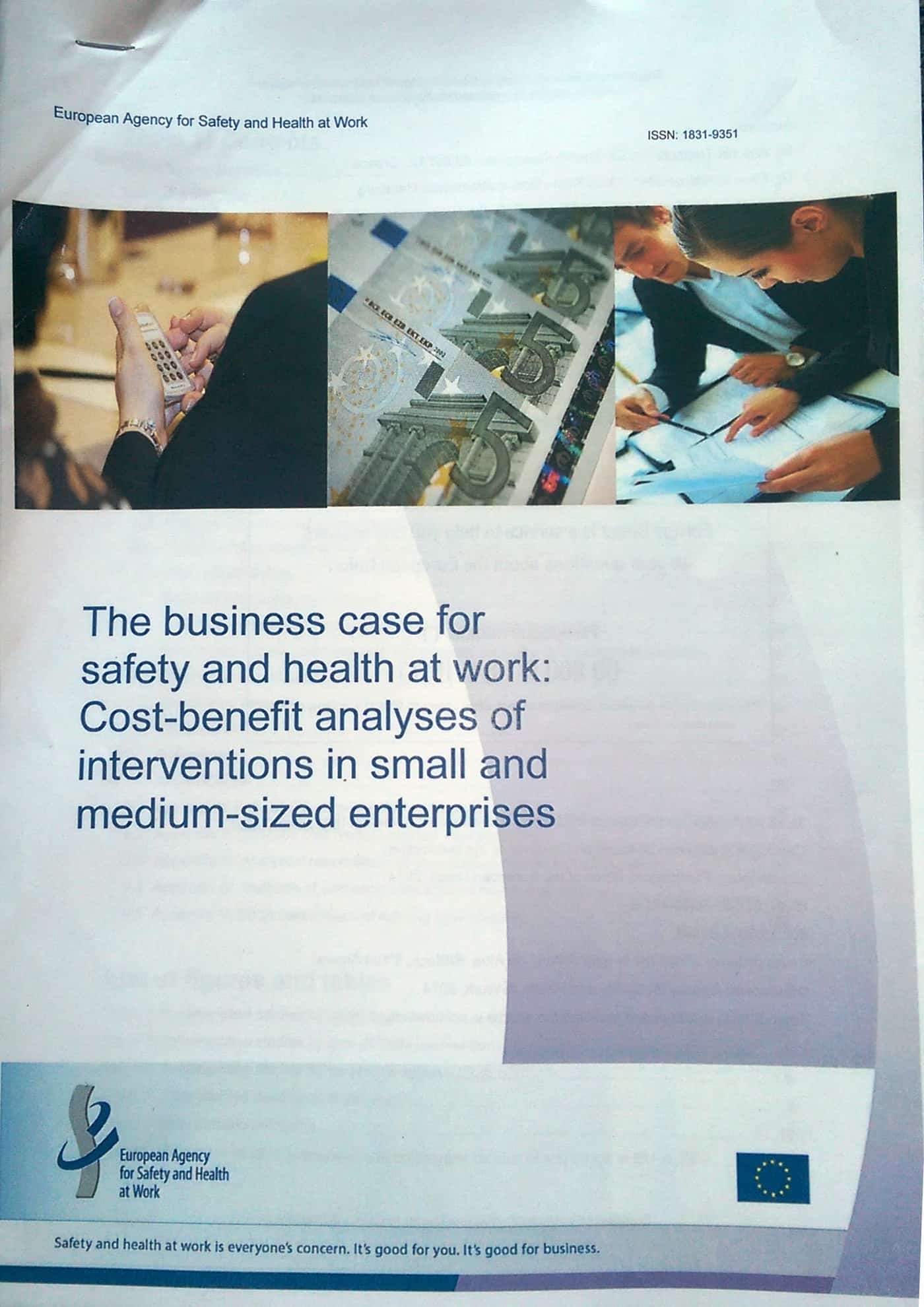 One of the most ignored, but important, elements of occupational health and safety (OHS) management is the business case. Work on this issue is being completed in Australia by Safe Work Australia but the European Agency for Safety and Health at Work (EU-OSHA) has beaten it to the punch by releasing “The business case for safety and health at work: Cost-benefit analyses of interventions in small and medium-sized enterprises“. This document includes new case studies that provide detailed analysis of cost and return on investment from interventions as varied as a vacuum lifter for pavers to warm-up exercises and task assessments of domestic builders by qualified physiotherapists.
One of the most ignored, but important, elements of occupational health and safety (OHS) management is the business case. Work on this issue is being completed in Australia by Safe Work Australia but the European Agency for Safety and Health at Work (EU-OSHA) has beaten it to the punch by releasing “The business case for safety and health at work: Cost-benefit analyses of interventions in small and medium-sized enterprises“. This document includes new case studies that provide detailed analysis of cost and return on investment from interventions as varied as a vacuum lifter for pavers to warm-up exercises and task assessments of domestic builders by qualified physiotherapists.
The report found that:
- “Wide-ranging interventions appear to be more profitable than interventions targeting a particular
issue related to the sector of the enterprise.- Interventions that mainly concern training and organisational change appear to be more profitable than interventions based on technical changes (such as introducing new equipment).
- Interventions that include direct worker (participatory) involvement appear to be more profitable, regardless of whether or not increased productivity benefits are taken into account in the
economic evaluation.- In most cases, the enterprises managed to estimate benefits related to increased productivity. It
should be emphasised that increased productivity does not always come as a result of improved
safety and health, but it is taken into account in the context of a business case.” (page 10)

 SafetyAtWorkBlog has
SafetyAtWorkBlog has  It is very common to hear people say that the core motivation for introducing or improving workplace safety management is to cover one’s arse (to protect oneself from various legislative and reputational exposures), be that the collective arse of management, the board and executives or the arse of the individual worker. This is a fundamental misunderstanding of the intention occupational health and safety (OHS) laws and principles yet the fear of reputational damage is a strong motivator of change with which safety professionals should learn to work and, perhaps, exploit, particularly as the traditional methods for corporate embarrassment, the media, are declining.
It is very common to hear people say that the core motivation for introducing or improving workplace safety management is to cover one’s arse (to protect oneself from various legislative and reputational exposures), be that the collective arse of management, the board and executives or the arse of the individual worker. This is a fundamental misunderstanding of the intention occupational health and safety (OHS) laws and principles yet the fear of reputational damage is a strong motivator of change with which safety professionals should learn to work and, perhaps, exploit, particularly as the traditional methods for corporate embarrassment, the media, are declining.